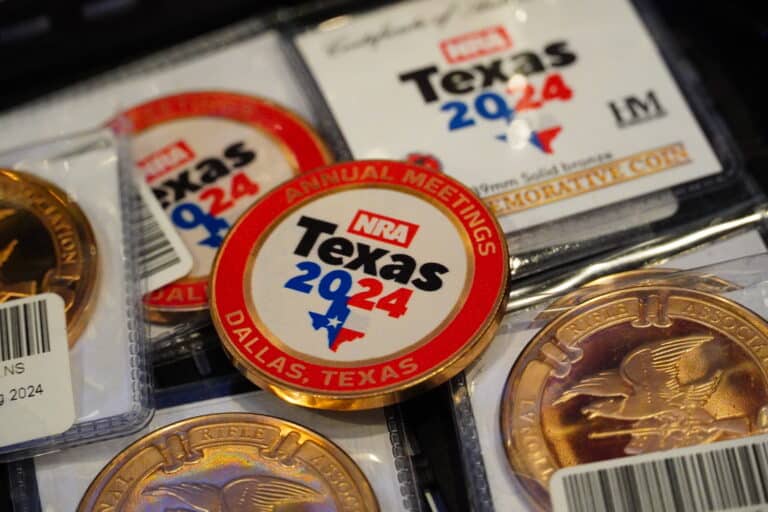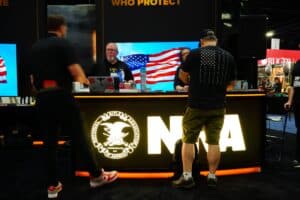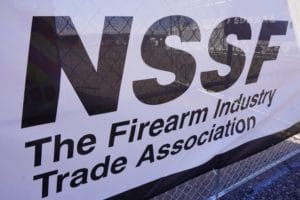The reformers are ascendant at the National Rifle Association, but have they made enough progress to fix things before the wheels fall off?
The first substantial sign that reforms had gained real sway with the NRA membership came at the beginning of the month when a slate of them won board seats, with several landing among the most-voted-for candidates. In the five years since longtime NRA CEO Wayne LaPierre was accused of diverting millions of the charity’s dollars toward lavish personal expenses, the board election was the first direct, concrete sign members were fed up with the ordeal and wanted the significant change the reformers promised.
Most of the rest of the board seems to have gotten the message, too. While only five of the 76 board members ran on a reform platform, they took three of the four top positions in the leadership elections. The candidates put up and endorsed by the reformers won the First and Second Vice President positions. Most importantly, they picked Doug Hamlin as the permanent replacement for Wayne LaPierre as Chief Executive Officer and Executive Vice President.
The group also secured a majority on the nominating committee, which decides who gets on the board election ballots and who gets put up in future leadership positions. They also got a number of members on the executive committee, which effectively operates the NRA between full board meetings.
That’s a remarkable turnaround from just a year ago, when nearly all of the vocal reformers had been wiped off the board, and LaPierre remained in charge.
However, the NRA’s problems have also deepened in that time. Shortly after LaPierre resigned, a jury in the group’s corruption case found he’d taken upwards of $5.5 million from its members to spend on lavish personal jet travel while the NRA failed to safeguard its assets. Those members have continued to flee, resulting in plummeting revenue that’s left the organization on the brink. Despite being forced to cut back on most core services and programs, its legal fees have continued to flow into the coffers of controversial outside counsel Bill Brewer at a furious pace.
Its political relevance has faded, too. It can no longer support the staff needed to lobby effectively at the state and federal level, and its Political Victory Fund has uncharacteristically fallen behind the fundraising pace of the gun-control groups. While it was still able to bring Republican presidential nominee Donald Trump to speak at its annual meeting, and it has already agreed to host another event with him over the summer, there’s little chance it will be able to spend even half of what it did to help elect him in 2016.
There’s a ticking clock element to this turnaround attempt, too.
The second phase of the NRA’s corruption trial is set to begin in less than two months. That gives the group very little time to change course on either its legal strategy or internal practices. And, given at most 36 of the 76 board members voted for the reform leadership candidates and a member of the old leadership team won the president’s race, they are likely to face at least some internal opposition to major changes.
There’s also the fact that the reform candidates who won weren’t the ones who’ve spoken out publicly against LaPierre’s corruption or the dodgy path past leadership took the group down. Nor are they outsiders being brought in to clean things up. Instead, like Doug Hamlin himself, many have been with the organization throughout this ordeal. If they’ve done anything to change course up to this point, they’ve done it out of public view, which may make some reform supporters skeptical of how far they’re willing to go.
Still, less than a week into the NRA’s new leadership regime, there are already signs of substantive changes.
The last thing the NRA’s old leadership tried to do before losing control was move the group’s headquarters from Virginia to Texas. But when reformers pressed them at the members’ meeting last Saturday, they were unable to articulate what purpose the move would serve or how much it would cost. Hamlin announced on Thursday that the move was being put on hold and encouraged more staff to work from the group’s headquarters.
Hamlin also split up the role of John Frazer, who was found by the jury to have knowingly signed off on materially false statements about the group in government documents, and appointed a different person as the NRA’s general counsel. He also brought back Joe Debergalis to run the NRA’s general operations. Degbergalis was removed at the end of last year to make way for former spokesperson and longtime LaPierre ally Andrew Arulanandam to take the role, which put him in line to become interim CEO after LaPierre resigned.
Hamlin has also taken a different approach to discussing the NRA’s struggles. While previous leadership largely deflected questions about them, he has acknowledged the issues head-on in an email to the NRA staff and comments to The Reload. He has promised a “new NRA” with a greater commitment to transparency and good governance.
“I think that we’re going to be more transparent, just like we were in this board meeting today,” he told The Reload shortly after his election on Monday. “And we’re going to be good stewards of their money. And we’re going to be responsible managers and regain their trust over time.”
His statements indicate that he and the other reformers plan to institute other changes in an effort to regain the members they lost during the ordeal.
“Once our members see we are making progress with the changes resulting from the efforts of our Board of Directors, they will come back in significant numbers,” Hamlin said in the email to staff that was obtained by The Reload.
But the NRA needs to do much more, and there’s not a lot of time to do it. Actions will speak louder than words, as they always do, and we’ll be here to document them if and when they happen.







6 Responses
A decent start – hopefully. A big step? Cut the board from the current 76 (!) members down to maybe 20. And the Board members need to be ACTIVELY involved in oversight and leadership in the key areas (Membership / growth, Political, Competition, Law Enforcement / Training). Cut down the pay of ALL executive roles – and reduce the board stipend, Reduce ALL reimbursement limits, too.
The NRA is a CIVIL RIGHTS organization – not a personal enrichment Ponzi scheme like BLM,
I think those ideas have a lot of purchase among the reformers. Some of them will likely be a lot harder to implement than others, the board cut for instance. But they all seem doable with enough time and effort.
Thank you Stephen, for getting the scoops (some exclusive), and getting all this (so far…) good news to us.
Thanks! It literally wouldn’t be possible without you and the other members. We couldn’t operate without your support.
From a replier at the ‘NRAInDanger’ WordPress blog (User “franktait”, maybe?), the number of most non-profits is much smaller than 20 (again, trying to recall here: 9 to 11 BoD members)
Otherwise, thank you, some good points you’ve made.
Yea, shrinking the board may be a good idea. I just think it’s not something that’s likely to happen quickly.